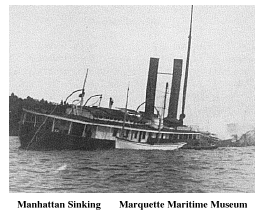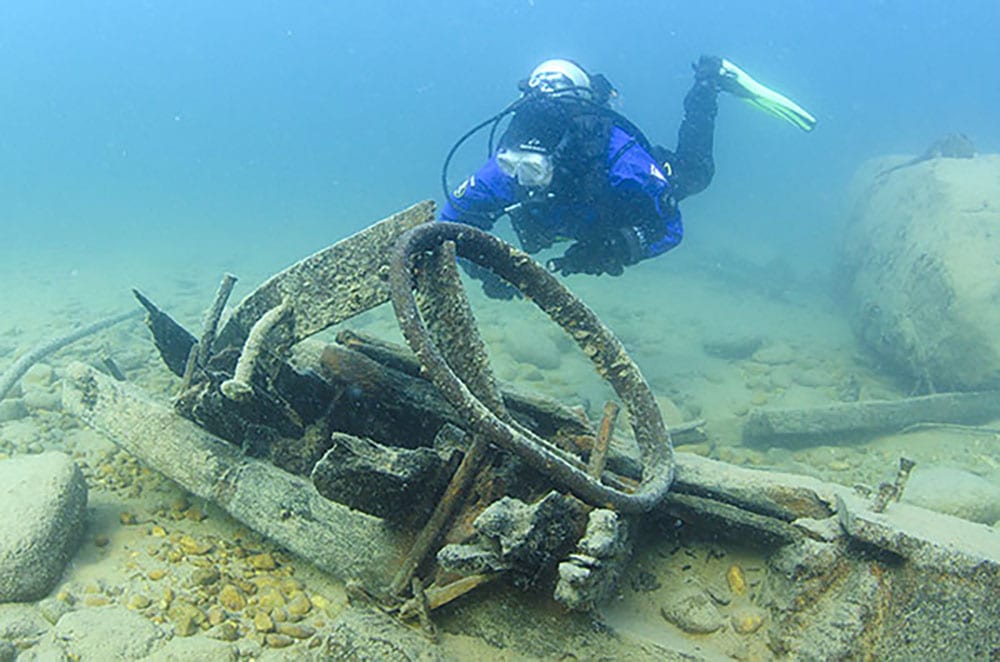


 (906) 387-4477
(906) 387-4477
The Manhattan
The Gilchrist steamer MANHATTAN, down bound on Lake Superior from Duluth for Buffalo, was forced by north gales to shelter behind Grand Island. After the weather moderated late on the night of the 25th, the MANHATTAN started down the east channel for the open lake. About midnight, when she was opposite the Beacon Light, her steering chain broke, causing her to veer off course and strike a reef just off the channel.
No sooner had she struck, than a fire broke out. Apparently the force of the grounding knocked over a lantern which started the conflagration. It was the only explanation the captain and his mates could offer. When the fire could not be brought under control, the crew was taken off by the Powell and Mitchell tug WARD. The steamer burned to the water’s edge, and together with her cargo of 76,000 bushels of wheat, was a total loss.

The 1,545-ton MANHATTAN, a comparatively modern and staunch vessel, was built in Detroit in 1887 and measured 252 feet by 38 feet by 19 feet. She had two decks and three masts. Iron straps crisscrossed her hull under her planking to provide additional strength. Innovative for her time, she had a steel boiler house, steam pumps, windlass and electric lights.
Owned by the J .C. Gilchrist Company of Cleveland, she was the seventh vessel of the Gilchrist fleet lost during the 1903 season. The others were the MOONLIGHT, WAVERLY, SWAIN, CRAIG, A.A. PARKER, and MARQUETTE. All were wooden vessels and oddly for the Gilchrist Company which made a frequent practice of saving money by not insuring their vessels, all were insured during the 1903 season.
The wreck of the MANHATTAN was sold at auction in 1905 for $1,600. Apparently her new owners salvaged her engine, boilers, and the coal from her bunkers, but the burned-out hulk itself was too difficult to move without great effort and expense. The wreck was just on the west edge of the channel and posed a danger to navigation. In 1910 the federal government contracted with Thomas Durocher of Sault Ste. Marie, Michigan to remove the wreck for the sum of $1,900. His method seems to have been to first recover any salvageable material, mostly iron and steel, then knock the hull down.
Due to the actions of the salvagers, as well as the destructive forces of the lake’s wind and ice, the remains of the MANHATTAN are widely spread along the west side of the east channel. The shallowest sections, in about 15 feet of water, can often be seen from the surface.
Scuba divers can visit a large portion of the steamer’s hull framing, including massive timbers and the distinctive iron strapping, in about 25 feet. The vessel’s enormous rudder, with its depth markings still visible, lies nearby, along with some of the deck fittings and machinery. Additional portions of the hull can be found farther out in the channel in depths down to 40 feet.

